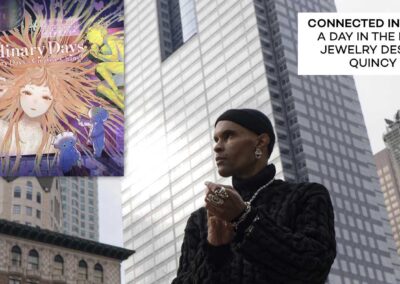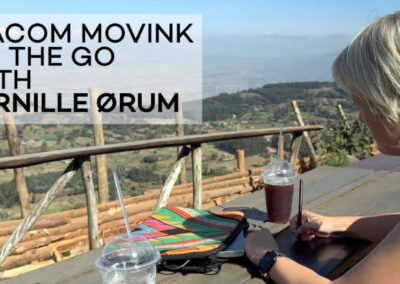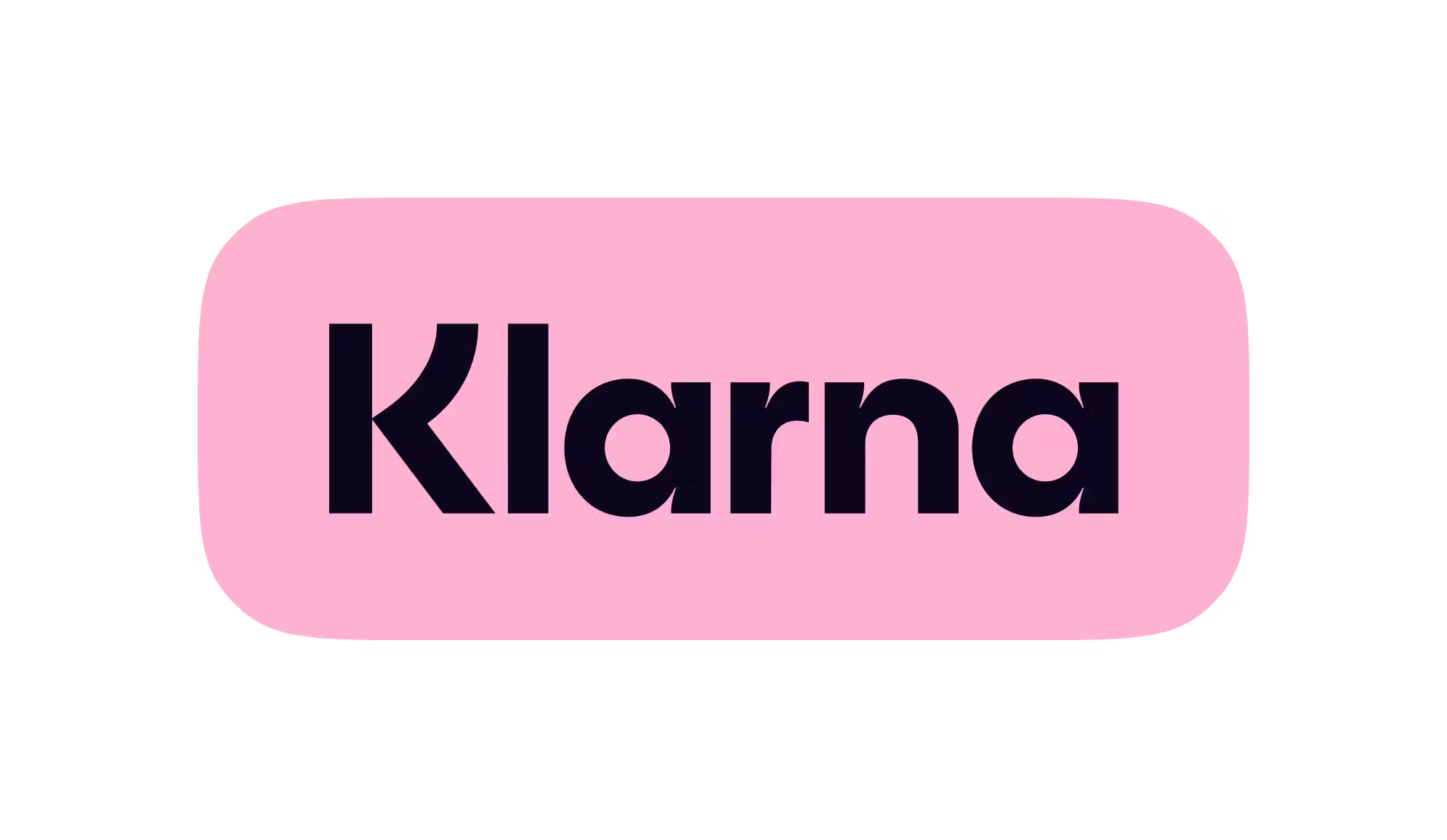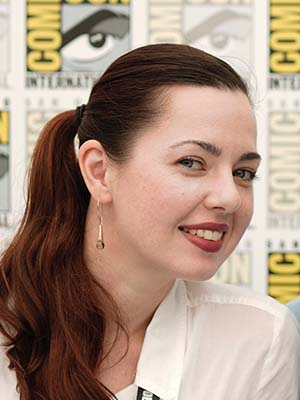
Oksana Nedavniaya is a costume concept artist in the film and television industry who has worked on a number of high-profile productions, including Twilight, The Chronicles of Narnia, Stranger Things, Aquaman, The Wheel of Time, Shazam! Fury of the Gods, and the upcoming The Hunger Games: The Ballad of Songbirds & Snakes. To learn more about her work, check out her portfolio or follow her on Instagram.
She is also presenting and/or participating in two workshops at the upcoming Lightbox Expo 2023, taking place October 27-29, 2023 in Pasadena, CA. For more about Lightbox, including details about Nedavniaya’s sessions, other sesions featuring Wacom artists, and how to attend, please see the bottom of this post.
We spoke to Nedavniaya about her journey to a career in costume concept art, what young artists should know if they’re considering a career in film and TV generally, or costume art in particular, and what attendees can expect from her session. The interview has been edited for clarity and length.
You originally trained as a pianist. How did you know that you actually wanted to be a visual artist? Was it difficult to switch from music to visual art?
I have always been drawn to visual arts. I became inspired by the works of Ivan Bilibin and Viktor Vasnetsov at a very early age. My grandmother — I grew up with my grandparents — enrolled me into the art studio when I was about eight years old, with a very talented and caring teacher. He created a variety of exciting projects for the group from plein-air watercolor studies at the local park to making papier-mâché dolls for the puppet theater performance. It was absolutely magical; I was very inspired and kept painting through my summer breaks.
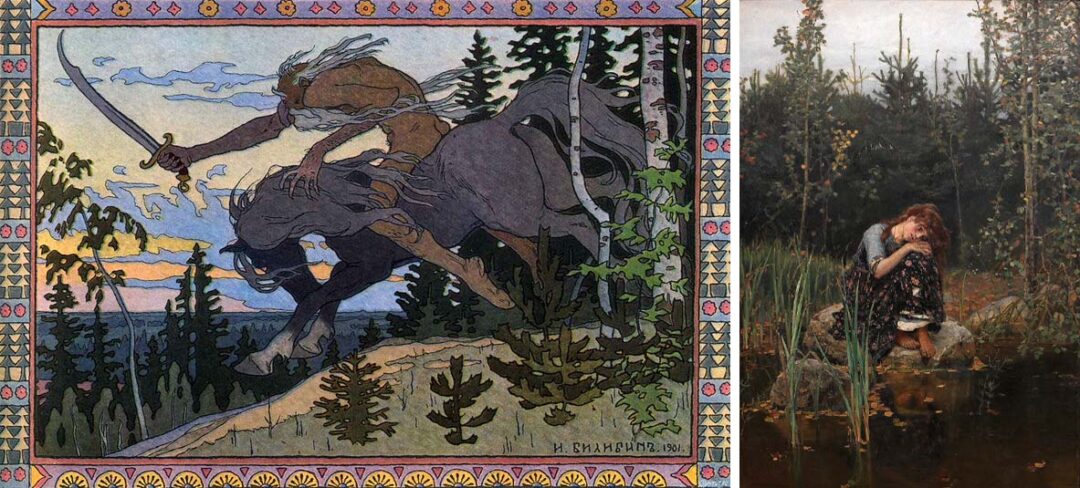
Unfortunately, my grandmother dreamt of me becoming a concert pianist. My years in music college were not very happy. So, when I graduated with honors, I decided that I had fulfilled my duty to my grandmother, and it was time to pursue what I was really interested in. I knew I born to [be a visual artist], and I never looked back.
You graduated with a degree in Fine Art from California State University, Long Beach. How did you decide to go to college there? Do you feel like art school is necessary, or can young artists today teach themselves?
I did look at some art- and fashion-specific schools, such as OTIS, FIDM, and Art Center, but I did not think it was financially feasible. After some research, I found the Illustration program at CSULB had high ratings, and it sounded like a logical choice. I also enjoy learning about subject matters outside of art, such as history, philosophy, and psychology, so going to a school that offered a wider curriculum proved beneficial.
In this day and age, there are so many teaching resources available literally at our fingertips. I myself have watched countless hours of free tutorials on YouTube, especially while teaching myself Zbrush. I do think, however, that physical schools are still relevant, because they can offer invaluable opportunities for mentorships with industry professionals. Peer interactions also play an essential role in artistic development, not to mention the life-long friendships and creative collaborations that can often start in art schools.
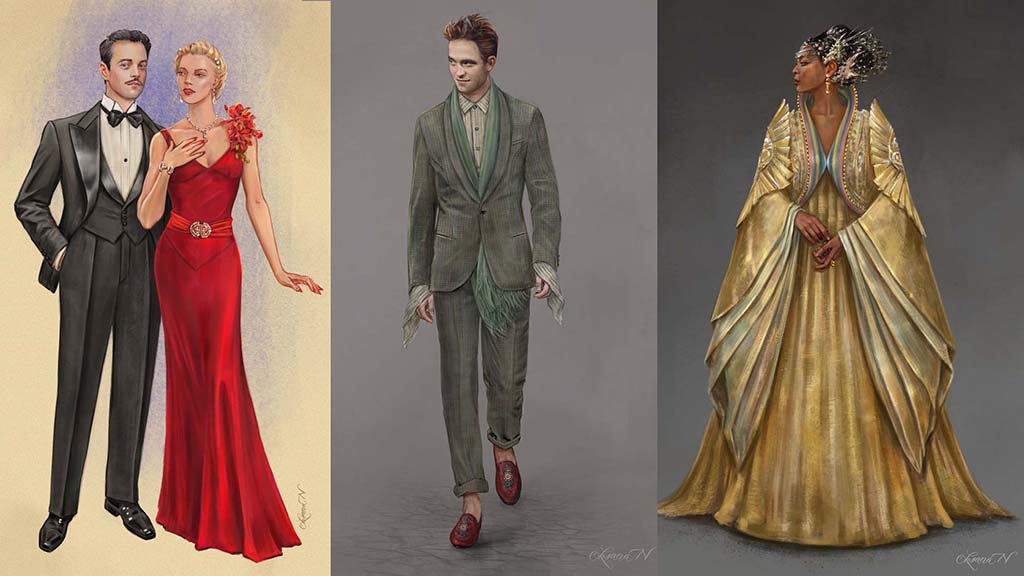
What drew you to costume design? And why did you pursue concept art for media rather than, for example, a career in the fashion industry?
When I first moved to the United States and started taking courses at Santa Monica College, I thought I wanted to be a fashion designer. It wasn’t until my first class in fashion illustration, with Jemi Armstrong, that I realized I liked drawing more than anything else. I was considering fashion illustration, but always thought it was a very narrow niche that would limit my future employment opportunities. I decided to get more of a well-rounded art education and a broader illustration degree. My focus, however, was always on figurative drawing and creating character through clothes.
My introduction into the world of costume illustration was through Robin Richesson, my beloved instructor at CSULB. She worked as a costume illustrator and storyboard artist on a number of productions, and at that time also held the position of a costume illustrator representative with the Costume Designers Guild Local 892. Robin shared her knowledge and experience about the job, and all of a sudden it seemed like a viable career choice worth pursuing.
Something I love about working in film and TV is that every project presents a different challenge and forces me to grow and improve as an artist. Also, working in the film industry is not a solitary pursuit — what makes the final product possible is a collaboration of incredible visionaries and craftspeople. Feeling like I am a part of that family is what inspires me.
What is something essential that young artists need to get their work out there and prepare themselves for their “big break” into their chosen industry?
I would say that luck — being at the right place at the right time — plays a major part … but you also have to constantly work on your craft, so when that moment occurs you are prepared. The advice that I would give to young artists is to say yes to as many opportunities as possible, even if you don’t feel like you are 100% ready. And to network.

In many creative fields, including concept art, women are often outnumbered by men. How have you approached this issue in your creative and career journeys? What might you tell a young woman artist who wants to pursue a career in a creative industry, but is worried about this?
Yes, this is true. I have worked in plenty of rooms full of concept artists where I was the only woman. Throughout my career, I have always felt like I had to “keep up with the boys.” This can be a double-edged sword: it forces you to constantly work on your craft and learn new tools to stay competitive, but at the same time it makes it challenging to stay true to your own artistic voice. My advice may sound surprising, because you often hear “work on your weaknesses” point of view … I say “identify your strengths and capitalize on them.”
What is your typical artistic process? What is a day in the life of a costume concept designer like?
It really depends on the costume designer or production designer I am working with. Sometimes I am given a straightforward task with very specific references, and my job is to make it into a presentable image that would “sell” an idea to the director/studio/actor. Other times, there is a process of finding visual language that doesn’t quite exist yet, and needs to be fleshed out. In those cases I contribute to the research and go through different ideas and iterations; there is more of a collaboration between me and a designer until we land on something that makes sense visually and helps the story in the most organic fashion.
I feel like I am a bit of chameleon when it comes to style and process and I constantly adapt to the demands of a production. Depending on the look I’m going for, it can be sketching, quick photobashing combined with digital painting, or sculpting in Zbrush and rendering in Keyshot.
What do you love about your career, and what would you change?
My favorite part about the process is to see the concepts transpire into live action characters on screen. The industry work hours can be quite grueling, however; sitting in front of the computer for 10-12 hours a day can have a compounded impact on your body.

What are the primary software applications and hardware devices that you use, and why?
I work primarily in Adobe Photoshop. I have started incorporating Zbrush into my workflow for the concepts that require a full turnaround, or for elements that need to be custom sculpted. Sometimes I use Adobe Illustrator for graphics and textile prints and Daz3D for quick posing.
When it comes to anything art related, it is extremely difficult to work with a mouse. I didn’t make full transition into the digital world until 2014, however, while working on Suicide Squad. I had to teach myself digital painting, with elements of photobashing, super fast — and my trusted Wacom Intuos came in handy. However, with the amount of work I was doing, that small drawing space of an older Intuos model became too confining, and I knew I needed an upgrade. Switching to a Wacom Cintiq completely changed my life.
In 2014, I bought a Wacom Cintiq 22HD pen display, and this is the one I am still using to this day. What a difference that made! Incomparable pen pressure and tilt sensitivity made the process more intuitive and satisfying, improved the quality of my work, and dramatically increased my efficiency. Also, my shoulder pain was gone, so I knew It was also a much better solution ergonomically.
I have used my Cintiq exclusively since then for all my digital drawing, painting and sculpting. It has traveled with me on location, and this is the only pen display I feel comfortable using. My 2014 Cintiq has obviously stood the test of time, but I will be looking into upgrading soon, and can’t wait to test all the new and improved features.
Do you have any advice for young people who are thinking about an eventual career in costume design, concept art, or another creative field?
Here’s my advice:
- Build your skillset.
- Learn how to communicate.
- Be gracious to everyone in the field.
- Build your visual library.
- Network, network, network.
- Learn and try new things.
I believe that costume design is a form of storytelling. So, the most important thing when creating a design is to ask yourself: what is your character’s story?
What sessions are you leading and/or participating in at Lightbox 2023? Who should attend your session(s)?
I am doing a presentation/demo with Wacom at 1:00 pm, on Saturday, October 28, and I am participating in a Women of Concept Art in Film and TV panel at 4:15 pm on the same day.
My Wacom demo is for everyone who is interested in transitioning from 2D to 3D media, finding their unique artistic voice, or who wants to learn some practical applications of using Zbrush software.
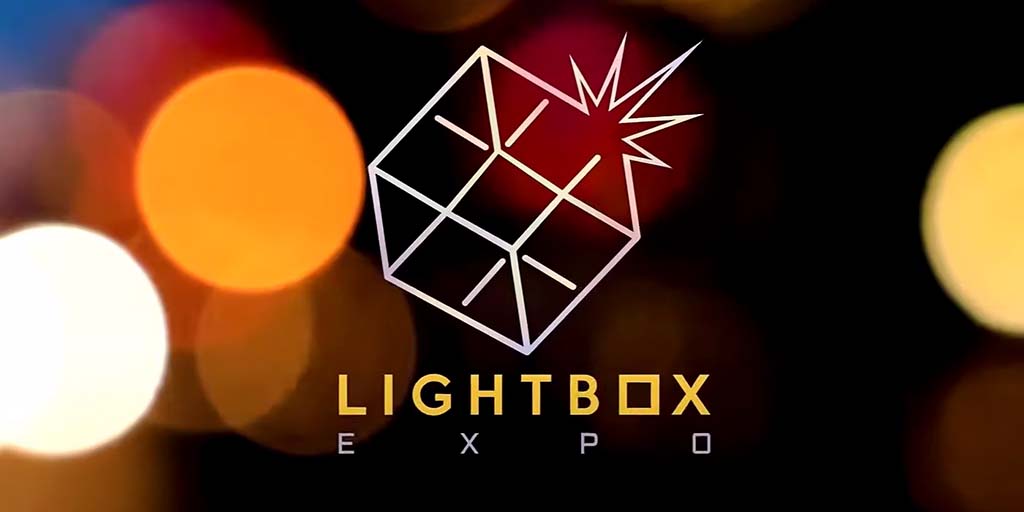
Oksana Nedavniaya’s sessions at Lightbox 2023
Wacom is proud to be a Lightbox Expo sponsor, to have an exhibition booth — we’re at booth 907, come stop by — and to be hosting a variety of sessions and activities at Lightbox. If you’re attending, we’d love to see you!
Here are the two sessions that Nedavniaya is participating in. Stay tuned for another post on this blog, next week, where we’ll break down every Wacom session and activity happening at Lightbox.
Saturday, October 28, 2023
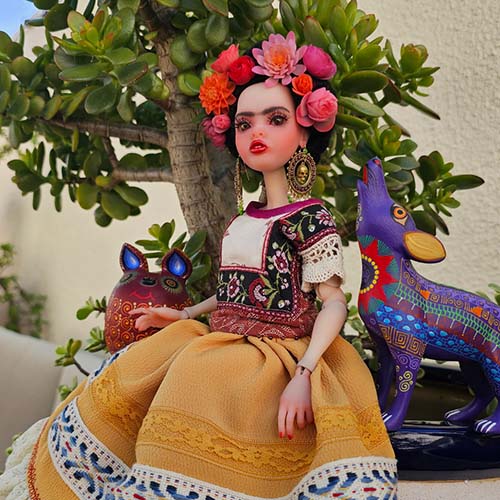
Discovering a New Passion
Presented by Oksana Nedavniaya / Costume Concept Artist
Oksana Nedavniaya is known for her contributions as a costume concept artist on a number of film and TV productions, but she has a newly discovered passion: making dolls! During this special Wacom demo at Lightbox, Oksana will share how she ended up falling in love with doll-making and will also share part of the process of modeling a 3D ball-jointed figure in Zbrush.
When: Saturday, October 28, 1pm PST
Where: Booth 907

Women of Concept Art in Film and TV
Moderated by Mairi Chisholm. Featuring Imogene Chayes, Robin Richesson, Gina DeDomenico, Jen Hancock, Oksana Nedavniaya, Maggie S. Chan, Maybelle Pineda, and Barbra Araujo
Join us for an open and insightful discussion featuring concept artists working in film and television. These talented artists share their perspectives and experiences as women in entertainment on unique paths and at different stages of their careers. These women have worked on projects such as Black Panther: Wakanda Forever, The Boys, She-Hulk, Yellowjackets, The Wheel of Time, and Hunger Games: The Ballad of Songbirds and Snakes. Attendees will have a chance to win a Wacom Cintiq 16 and a Wacom One!
When: Saturday, October 28, 4:15pm – 6:00pm
Where: Room 107



